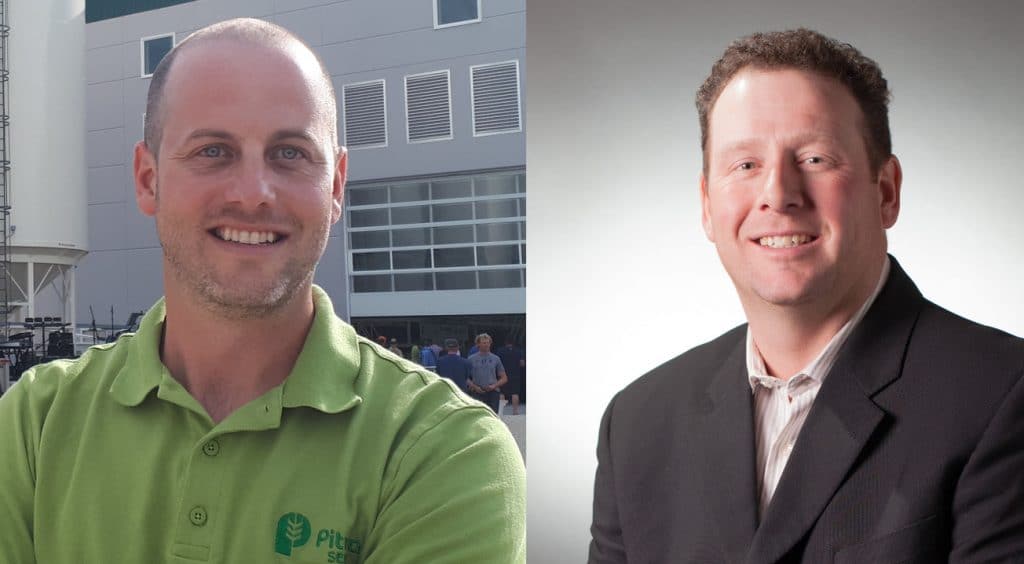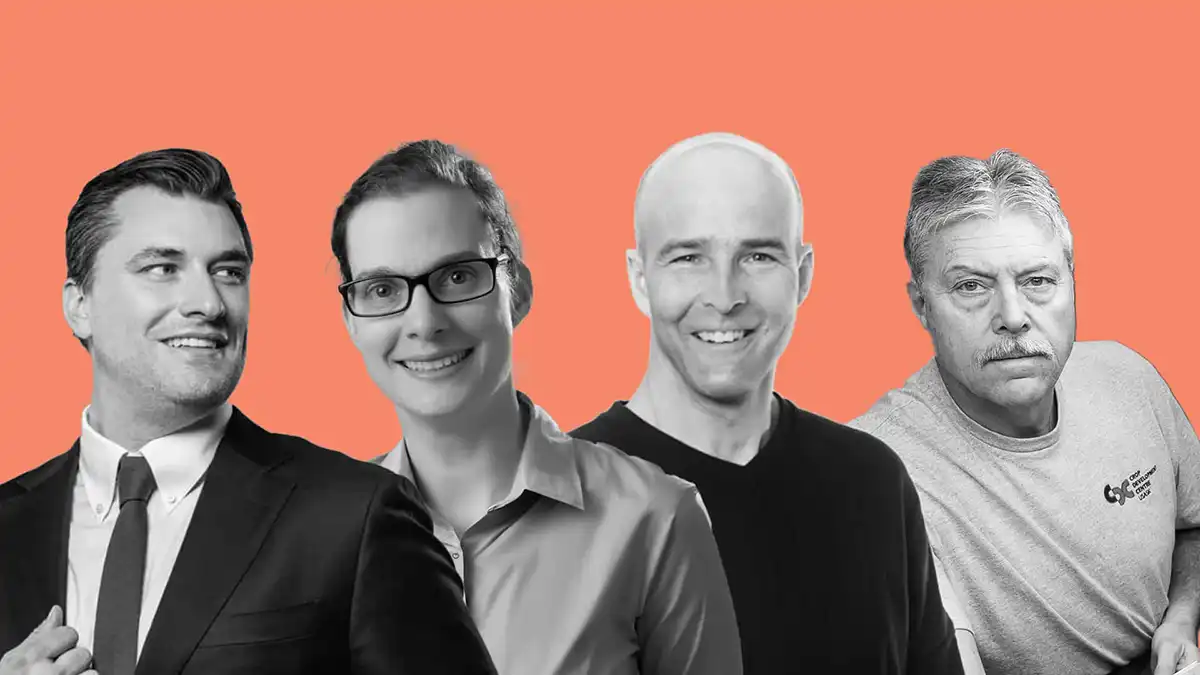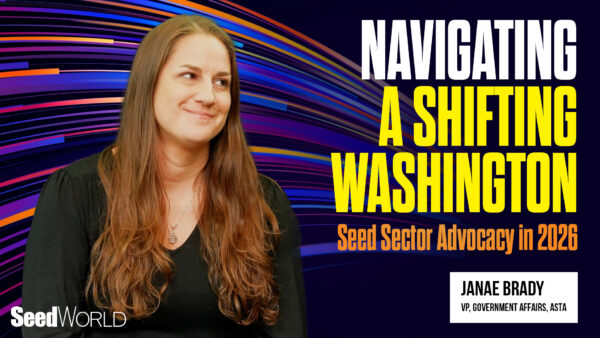How do we build a single national seed organization? Some experts provide key insights.

As Western Business Manager for SeCan, Todd develops new business opportunities for SeCan members and industry partners. He is also a past-president of the Canadian Seed Trade Association.
Todd, there’s been a lot of talk about Seed Synergy these past few years. Can you give us a quick snapshot of what is happening here?
It’s important to think of Seed Synergy as a process rather than a thing. One of its major goals is a new national seed organization that will amalgamate five of the six current players in the industry — the Canadian Seed Growers’ Association, Canadian Seed Trade Association, Canadian Seed Institute, Commercial Seed Analysts Association of Canada and Canadian Plant Technology Agency. The goal is a better, more efficient system to serve the entire industry — whether you are large or small, a grower, processor, developer and ultimately our farm customers and end users. We need to build something to position us for the future.
Why are we doing this now?
There’s a regulatory opportunity that allows us to change how we do things. When we look at the government regulatory review happening in 2020 and 2021, we want to ensure we have a system in place to adapt to what government wants to do. In terms of what government can provide to industry, we’re not going to be provided with any more. As we look at those resources and how we govern ourselves, it’s crucial to use those resources effectively and be proactive in filling those gaps so we can be proactive and not reactive.
What’s has government’s response been so far?
From the beginning, we described this as industry-led and government-enabled. We check in with Agriculture and Agri-Food Canada and the Canadian Food Inspection Agency at each step to ensure they are on the same page. They have given us the thumbs-up to keep moving forward and encourage us to continue to flesh out the new organization.
What will the budgetary requirements of this new organization look like?
We’re working through that now — what membership structure might look like, costs, that sort of thing. The ultimate goal is to make sure we add value, not costs.
How will provincial seed growers fit into this new organization?
We’ll be fleshing out that structure over the next few months, but there’s great support for having provincial outreach within the new organization. Having that two-way information flow strengthens the new entity. There’s strong support for maintaining a provincial-type system to ensure involvement by grassroots members.
Will the new organization have a single, central office location?
The goal is to have one entity. In terms of offices, it’s too early to tell what that will look like. That will be sorted out within the next year. The important thing is to build a governance structure that works. Staffing requirements will follow.

Dave joined Canterra Seeds as CEO in October of 2009 and was shortly thereafter appointed president. He is an industry veteran with experience working in Canada and internationally. In 2018 he was selected as one of Germination’s Top 20 Influencers in the Canadian seed industry.
Some argue things are fine the way they are with the current makeup of our industry. How do you respond to that?
We can say things are going fine, but we need to think about the future and what it holds for us as an industry. Bringing one single voice to the table to deal with many of the issues facing our industry, we’re much better under one umbrella than on an individual basis. We are working in a global economy and we need to ensure as an industry we remain competitive and attractive as it relates to investment.
What’s the oversight committee’s guiding philosophy when it comes to designing the new organization?
Ultimately, when we create a new organization, we look at what the net benefits are for members. If you think about improving member services, we can consider issues around regulatory matters, intellectual property protection, advocacy, support functions, communications and training — all those necessary functions. We also need to think about the number of hours and effort that go into running these individual organizations. We have skilled and competent staffing today, but a lot of the heavy lifting is reliant on membership and volunteer time. That becomes very taxing on people’s time with the extreme overlap we have with some of these organizations.
What are the primary considerations with regard to the benefits for the main stakeholders?
We’re looking at where the value and benefits lie for the plant breeders creating new varieties.
We can see it’s going to take a concerted effort to ensure we as an industry are aligned in being able to lobby for the rights of breeders, and that would be a huge benefit a single organization will bring to the table.
From a seed grower’s perspective, their focus is on making sure they have the right varieties in the right place at the right time. We want to make sure they have the tools available to expedite their business through modernized and streamlined production systems and standards. Certification processes need to be timely and done with the right vigour. They also want to ensure they have access to the most innovative varieties that will create value for their own farm operations. That’s what we’re all in business for — to service that end user.
As far as labs and inspectors go— people who help monitor everything with relation to quality assurance — working together with the entire value chain and seed industry means we can all get and have what we need to facilitate that whole process. Working under one umbrella will help that.
The Seed Synergy White Paper is done. What are the next steps?
We have contracted the services of StrategyCorp to help facilitate the creation of this new system that we’re building. They’ve got a very aggressive mandate to see this through. We are hoping to have this in final draft form by July 2020. A lot of work and communication has to be done across the country with all members engaging. We will build on the mandate that has been created through the evolution of the White Paper — that is going to be the framework of what we’re building. Even once we reach July 2020, somewhere along the line we will start transitioning from the five entities into one and make this as seamless as possible.
How could having just one organization affect our country’s relationship with other seed orgs? For example, CSTA works very well with the American Seed Trade Association. How can one organization keep those close working connections?
I think one organization enhances our ability to work with the global seed industry, like the International Seed Federation, for example. When we can go to them with one solid voice, it will mean an awful lot more to the benefit of our farmers and seed growers, as opposed to having a conversation that’s fractured.

Tom Greaves (left) obtained his diploma in agriculture at the University of Manitoba in 2001. With many years of experience in the agriculture field, he has held roles in quality control and plant management.
Eric McLean (right) is a seed grower and retailer in Oak River, Man., and operates J.S. Henry & Son Ltd. He describes himself as a husband, father, brother, son, farmer, businessman, and proud seed grower for many farmers in western Manitoba.
As a grower and retailer, how will a single national seed organization benefit you?
Tom Greaves (TG): It really does get rid of the overlap. As a seed grower I belong to CSGA and as a retailer I belong to CSTA. We face the same challenges, so bringing us together makes sense.
Eric McLean (EM): The biggest thing is industry cooperation. I look at this from a grassroots perspective. It will hopefully lead to reduced operating costs and increasing funds available to advance seed industry initiatives. Having a joint annual meeting between CSGA and CSTA, for example — by doing that, we bring a broad section of people together to solve issues and have everyone in the room at the same time, so we don’t have to guess what others are thinking.
What are the biggest challenges you see us having in building the national organization and how can we overcome them?
EM: There’s a sentiment of “us versus them”. How will we do it, who will run it? It can be scary, which is natural when you build something new, but at the end of the day we have to keep fighting that fear and moving forward like we are doing.
TG: We have lots of history and legacy tied up in these five associations, and that means we have a lot of proud people around the table. Thing is, pride can sometimes make us resistant to change. I believe we have the right people around the table and most people can see the net benefit at the end of the day. We need to be focused and flexible as a group in building this.
Can you think of an example you’ve seen that made you feel encouraged that a single national organization will become a reality?
TG: It hit home for me this year when we were at the national meeting in Whistler, B.C., having the gala dinner night with everyone in the same room. There were 500 people together and everyone had the same goal of bringing the industry together and moving it forward. It was so gratifying to see 500 people with the same goals moving in the same direction.
EM: I agree with Tom. To be able to have a venue to bring everyone together like that, that’s how our associations began in the first place. A few years ago, CSGA and CSTA held their annual meetings separately. It’s so nice when the meetings are held together, you bump into colleagues and really get a sense of community. The more time we spend together like that, the more a single national organization makes sense.












